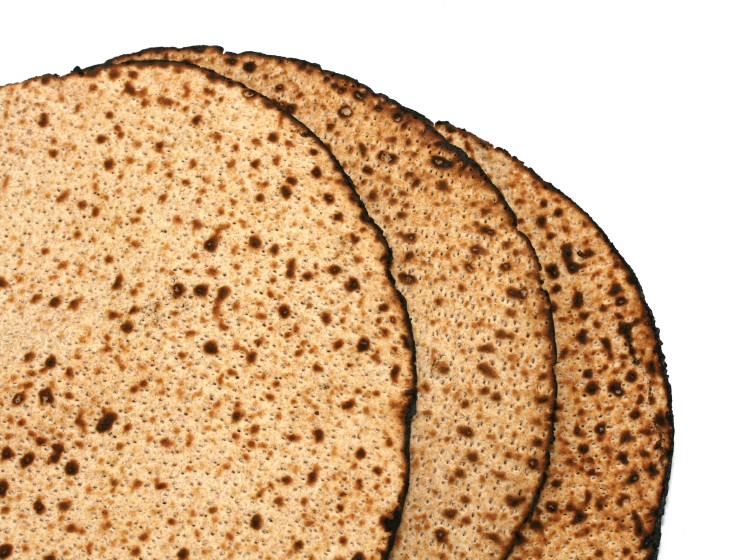Our minhag is to break the matza before maggid (Shulchan Aruch Orach Chaim 473:6). The Rambam (Hilchos Chametz u’Matza 8:6), however, puts it right before ha’motzi, after netilas yadayim.
The basis for this difference of opinion is the Gemara in Maseches Pesachim (115b) that darshens two things from the fact that the pasuk refers to matza as lechem oni: a) lechem sheh’onin alav devarim harbei (we say many words over the matza), and b) just as a poor person usually eats broken pieces of bread, so too must the matza be a broken piece.
Tosafos (Pesachim 116a) holds that the halacha that the matza must be a broken piece does not affect the general requirement to have lechem mishneh (two whole loaves) on Shabbos and Yomtov. Thus, we have two full matzos to fulfill the requirement of lechem mishneh, and an additional broken piece to fulfill the requirement that the matza be lechem oni. We break the matza before maggid because of the other derasha that we say many words – meaning the words of relating the account of the redemption from Mitzrayim – over the matza. And in what state is this matza over which we recite maggid supposed to be? Broken. Therefore, we break the matza before maggid so that we have the appropriate matza over which to recite maggid.
The Rambam, though, does not bring the halacha of onin alav devarim harbei. What the reason for this is, I do not know. But the fact is that the requirement to recite sippur yetzias Mitzrayim over the matza does not appear in the Rambam. Accordingly, there is no reason for the Rambam to put yachatz (the breaking of the matza) before maggid.
And the Rambam has a very strong reason to have the matza broken right before hamotzi. Unlike Tosafot, the Rambam holds that the halacha of lechem oni – that the matza has to be a broken piece – is specifically coming to cancel out the normal halacha of lechem mishneh. According to the Rambam, and some other Rishonim as well, there are only two matzos: one full one and one broken one. That is why the Rambam holds that the matza should be broken right before hamotzi. To show clearly that, even though we have two whole matzos, we are deliberately breaking one of them because that is the halacha of matza on the seider night: that it must be a broken piece, and not whole.
In terms of the extent of the mitzvah of eating matza on seder night, the Rambam (Hilchos Chametz u’Matzah 6:1) says, “once he has eaten a kezayit he has fulfilled his obligation.” This strongly implies – and the Netziv says this in his Haggadah – that if one eats more matza he gets more of a mitzvah. His fulfillment of eating the matza is even bigger if he eats more. This is similar to the mitzvah of wearing tefillin. If a person puts them on for one moment, he is yotzei. However, if he leaves them on he gets a mitzvah for every additional moment he wears them.
A certain great talmid chacham made the following pithy remark: there are two things that one must be careful to not overindulge in the whole year, eating and talking (see Avot 1:17 and Rambam Hilchos Deios 4:15); and on leil haseder regarding both of those things we say kol ha’marbeh harei zeh meshubach. When it comes to talking about sippur yetzias Mitzrayim it is explicit, as we mention in the Haggadah, and regarding eating matza it is a very strong inference, as we just elaborated.
